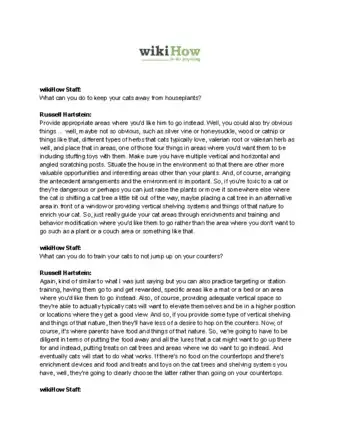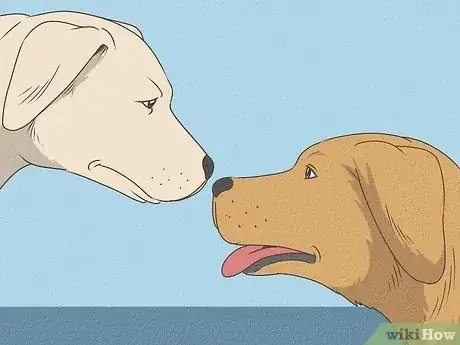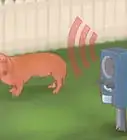This article was co-authored by Russell Hartstein, CDBC, CPDT and by wikiHow staff writer, Johnathan Fuentes. Russell Hartstein is a Certified Dog & Cat Trainer and CEO of Fun Paw Care in Los Angeles, California. With over 25 years of training, nutrition, boarding, and daycare experience, Russell and the Fun Paw Care team provide the most current, humane, and science-based methods utilizing force-free positive reinforcement to train and care for pets. Russell is an author for PetMD, Chewy, and Dogster. He is also regularly cited in publications from various organizations, including The New York Times, The Wall Street Journal, and the American Veterinary Medical Association (AVMA). He is a Certified Dog Behavior Consultant with the International Association of Animal Behavior Consultants and a Certified Pet Dog Trainer. He received his bachelor’s degree in History and Economics from Binghamton University.
This article has been viewed 7,142 times.
When it comes to showing emotion, dogs tell us a lot through their behaviors and body language. But what does it mean when their ears go back? As it turns out, a dog’s ears can tell you a lot. Like human eyebrows, their ears change position—along with the rest of their bodies—when they’re feeling happy, sad, angry, or scared. Here’s a list of the most common reasons why dogs put their ears back. Keep reading to learn what to look out for and how to respond to your dog’s emotions.
Things You Should Know
- Dogs put their ears back to signal many different feelings, including happiness, nervousness, aggression, stress, and even physical pain.
- Pay attention to a dog’s full body language. For example, a dog might bow when it’s happy but bark when it’s angry, with ears back in both cases.
- Ask a dog’s owner before approaching an unfamiliar dog. If the owner says yes and their dog seems relaxed, the dog is more likely to enjoy your attention.
- Give dogs space if they seem nervous, anxious, or aggressive. Dogs may bite to defend themselves if they feel threatened or scared.
Steps
Expert Q&A
-
QuestionHow do dogs act when they are nervous?
 Russell Hartstein, CDBC, CPDTRussell Hartstein is a Certified Dog & Cat Trainer and CEO of Fun Paw Care in Los Angeles, California. With over 25 years of training, nutrition, boarding, and daycare experience, Russell and the Fun Paw Care team provide the most current, humane, and science-based methods utilizing force-free positive reinforcement to train and care for pets. Russell is an author for PetMD, Chewy, and Dogster. He is also regularly cited in publications from various organizations, including The New York Times, The Wall Street Journal, and the American Veterinary Medical Association (AVMA). He is a Certified Dog Behavior Consultant with the International Association of Animal Behavior Consultants and a Certified Pet Dog Trainer. He received his bachelor’s degree in History and Economics from Binghamton University.
Russell Hartstein, CDBC, CPDTRussell Hartstein is a Certified Dog & Cat Trainer and CEO of Fun Paw Care in Los Angeles, California. With over 25 years of training, nutrition, boarding, and daycare experience, Russell and the Fun Paw Care team provide the most current, humane, and science-based methods utilizing force-free positive reinforcement to train and care for pets. Russell is an author for PetMD, Chewy, and Dogster. He is also regularly cited in publications from various organizations, including The New York Times, The Wall Street Journal, and the American Veterinary Medical Association (AVMA). He is a Certified Dog Behavior Consultant with the International Association of Animal Behavior Consultants and a Certified Pet Dog Trainer. He received his bachelor’s degree in History and Economics from Binghamton University.
Certified Dog & Cat Trainer Some telltale signs of a dog being stressed are them crouching down, lowering their posture, pulling their ears back, and raising their hackles. They might also have "whale eye," which is where the sclera of the eyes shows, and they can freeze up and be very stiff. Anxious dogs also tend to move away from the stimulus that is causing the fear and hide behind a parent or another dog.
Some telltale signs of a dog being stressed are them crouching down, lowering their posture, pulling their ears back, and raising their hackles. They might also have "whale eye," which is where the sclera of the eyes shows, and they can freeze up and be very stiff. Anxious dogs also tend to move away from the stimulus that is causing the fear and hide behind a parent or another dog.
Expert Interview

Thanks for reading our article! If you'd like to learn more about dog behavior, check out our in-depth interview with Russell Hartstein, CDBC, CPDT.
References
- ↑ https://academics.lmu.edu/media/lmuacademics/cures/urbanecolab/module09/Dog%20Body%20Language.pdf
- ↑ https://academics.lmu.edu/media/lmuacademics/cures/urbanecolab/module09/Dog%20Body%20Language.pdf
- ↑ https://academics.lmu.edu/media/lmuacademics/cures/urbanecolab/module09/Dog%20Body%20Language.pdf
- ↑ https://academics.lmu.edu/media/lmuacademics/cures/urbanecolab/module09/Dog%20Body%20Language.pdf
- ↑ https://academics.lmu.edu/media/lmuacademics/cures/urbanecolab/module09/Dog%20Body%20Language.pdf
- ↑ https://www.vetmed.ucdavis.edu/news/common-household-noises-may-be-stressing-your-dog
- ↑ https://hospital.vetmed.wsu.edu/2021/11/29/how-to-tell-if-your-pet-is-in-pain/
- ↑ https://academics.lmu.edu/media/lmuacademics/cures/urbanecolab/module09/Dog%20Body%20Language.pdf
- ↑ https://www.veterinarypracticenews.com/veterinary-behaviorist-debunks-dog-cat-behavior-myths/
- ↑ http://scienceline.ucsb.edu/getkey.php?key=6260
- ↑ https://www.ncbi.nlm.nih.gov/pmc/articles/PMC6116041/
- ↑ https://academics.lmu.edu/media/lmuacademics/cures/urbanecolab/module09/Dog%20Body%20Language.pdf
- ↑ https://www.veterinarypracticenews.com/veterinary-behaviorist-debunks-dog-cat-behavior-myths/






































































